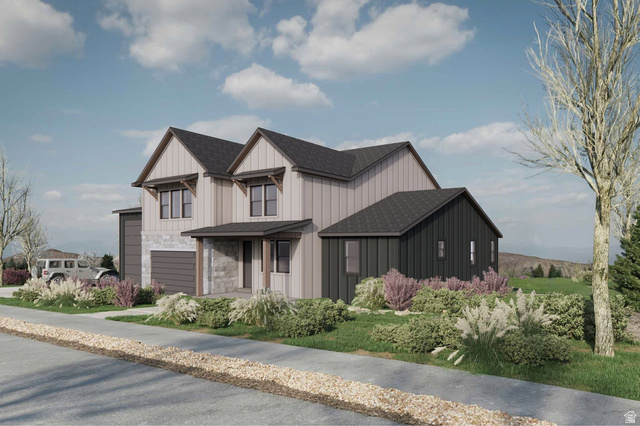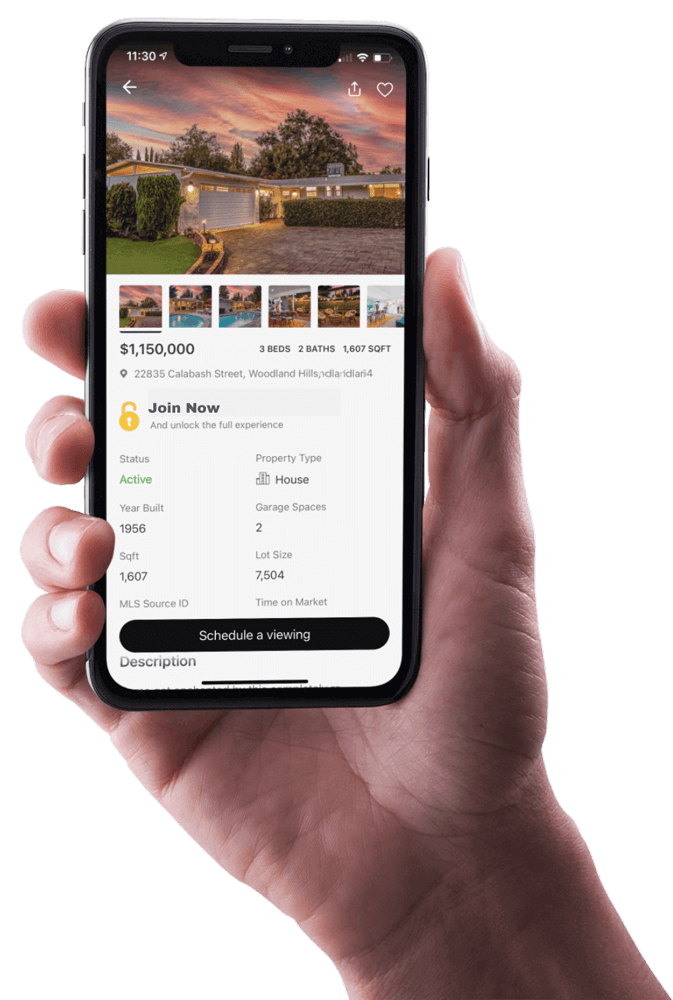
Utah has experienced rapid price appreciation in recent years, making the idea of finding a great home deal feel daunting. Yet even with higher mortgage rates and constrained inventory, smart buyers continue to secure exceptional outcomes by combining market knowledge, timing, and strategic negotiation. This article lays out a practical, step-by-step approach to find value in Utah’s real estate market, whether purchasing an existing home, pursuing new construction, or investing for future appreciation.
Current Market Snapshot: Why Utah Feels Expensive
Over the last five years, average home prices in Utah rose by roughly 60 percent. Counties such as Salt Lake, Utah, and Davis led that surge, outpacing most regions in the nation. The combination of strong job markets, population growth, and limited developable land around urban centers produced unusually rapid appreciation. Although price growth has moderated over the past two years, affordability remains tight for many households.
Several macro factors are shaping the current landscape. Recent downward adjustments in benchmark interest rates have increased buyer demand. At the same time, tariffs and trade policies that affect construction materials have tightened supply and elevated building costs, particularly for steel and lumber. Inflationary pressures and currency debasement have reduced purchasing power—over a recent 12-month period, money lost roughly 10 percent of its buying power—making ownership of durable, hard assets appealing to many prospective buyers seeking long-term protection from inflation.
Mindset Shift: Stop Chasing the Cheapest Price, Seek Long-Term Value
Purchasing a home should be viewed as a strategic financial decision, not a one-off bargain hunt. The lowest list price rarely equals the best long-term deal. A superior purchase balances home quality, neighborhood fundamentals, timing, and future appreciation potential. Buying the right home in the right location at the right time can produce stronger equity gains than obsessing over the absolute lowest asking price.
For example, properties in hyperactive submarkets like Draper or Lehi may command premium prices today, but neighborhoods undergoing new infrastructure investments—schools, commercial centers, and transit—can outperform in total returns. Emerging markets such as Eagle Mountain, parts of Davis County, Harriman, and other growing communities often combine lower entry prices with rapid equity-building potential once local amenities and jobs follow development.
Seven Proven Strategies to Find Exceptional Deals in Utah
These seven tactics reflect what seasoned buyers use to win in competitive markets. Each approach focuses on preparation, local market intelligence, and disciplined negotiation.
- Know the local market inside and out.
Successful deals are rarely random. They result from careful neighborhood research. Analyze price trends, days on market, and actual sold prices—not just list prices. Track patterns at the micro level: which subdivisions appreciate faster, where inventory collects, and how buyer demand shifts across seasons. Use local listing histories and county records to determine what similar homes sold for over the last 6 to 24 months. Those sold prices reveal real market value far more reliably than asking prices.
- Keep a constant eye on the inventory.
Market winners often move quickly. Continuous monitoring of new listings and price reductions unlocks early-mover advantages. Set up listing alerts for targeted neighborhoods, check for price cuts daily, and review withdrawn or relisted properties—these can signal seller motivation. Buyers who maintain a market watch can position offers the moment a favorable opportunity appears.
- Understand market timing and cycles.
Utah real estate has a seasonal rhythm. Spring and early summer usually show the highest activity and fastest selling homes. Conversely, fall and winter often present better negotiating conditions as fewer buyers are searching and motivated sellers are more common. Flexibility in timing can produce meaningful leverage. Additionally, macro events—interest rate changes, economic announcements, or policy shifts—can flip negotiating power in short order, so stay attuned to both local and national signals.
- Spot and exploit seller fatigue.
A property sitting on the market for 30, 60, or 90 days often indicates mispricing or limited buyer attention. As marketing days mount, seller urgency typically increases and willingness to negotiate grows. Monitor days on market carefully and target listings that have stagnated. Those sellers might accept price reductions, favorable contingencies, or concessions that would not be available in a fresh, hot listing.
- Work with a full-time, market-savvy agent.
Experience matters in nuanced markets. A full-time agent who is actively transacting knows local trends and can detect red flags in disclosures, inspection reports, or builder marketing. For most households, buying a home is one of the largest financial decisions of a lifetime; professional representation reduces risk and strengthens negotiation position. Many builders pay buyer agent commissions, so representing a buyer does not typically increase cost.
Explore Utah Real Estate

5618 E SOUTH FORK RD, Provo, UT
$43,000,000
Bedrooms: 6 Bathrooms: 10 Square feet: 22,958 sqft

864 W SAPPHIRE SKY LN #546, St George, UT
$4,300,000
Bedrooms: 7 Bathrooms: 9 Square feet: 5,136 sqft

850 LAZY WAY #8, Francis, UT
$1,300,000
Bedrooms: 4 Bathrooms: 4 Square feet: 2,755 sqft
- Be ready to act—get pre-approved.
Sellers prioritize buyers who can demonstrate financing certainty. A lender pre-approval not only confirms purchasing power but also signals seriousness. Prepared buyers can submit offers immediately when a suitable property appears, an essential advantage in markets where desirable homes sell quickly. In competitive situations, sellers sometimes choose a lower offer with stronger financing credentials over a higher but less certain bid.
- Do not overlook new home construction and builder incentives.
New construction often provides significant value that is overlooked by many buyers. Builders frequently carry finished or nearly finished inventory and prefer to sell those homes before they remain as standing inventory. To move these homes, builders can offer price reductions, closing cost assistance, upgrades, or mortgage rate buydowns. A mortgage rate buydown can reduce monthly payments and, in some cases, result in net savings that offset a slightly higher purchase price compared to an existing home. For buyers comfortable with new home timelines and warranties, builders can deliver exceptional total value.
How Builder Rate Buydowns Work and Why They Matter
When a builder offers a mortgage rate buydown, the builder pays points at closing to lower the buyer’s interest rate for an initial period or for the entire loan term. The immediate effect is a lower monthly payment, which increases affordability without necessarily reducing the nominal purchase price. In markets with elevated market interest rates, a buydown can be transformational. It may produce monthly savings exceeding $100 or more depending on the loan amount and buydown structure.
Considerations for buyers reviewing builder incentives:
- Compare the all-in cost of the deal (price plus any concessions) to comparable resale properties.
- Evaluate the duration and structure of the buydown. Some are 1-0-0 or 2-1 buydowns, meaning lower rates for the first years only, while others are permanent.
- Confirm that inducements are documented in the purchase agreement and that there are no hidden offsets in upgrades or allowances.
- Always bring independent representation to builder model homes. On-site sales representatives work for the builder’s interests, not for the buyer.
Practical Negotiation Tactics That Produce Results
Strong negotiation arises from preparation and market insight. Below are tactical maneuvers that increase the likelihood of a favorable agreement:
- Lead with a credible offer supported by comparables and a robust financing profile. Documentation reduces seller uncertainty.
- Include inspection and appraisal contingencies when appropriate, but be prepared to adjust depending on pricing competition and market conditions.
- Start with clean, professional communication. Sellers respond well to buyers who demonstrate seriousness and organization.
- Offer flexible closing timelines or leaseback terms if they align with seller needs. Non-monetary concessions can sometimes tip the scales.
- When properties show seller fatigue, present a lower offer combined with a short due diligence period and a straightforward inspection clause to increase the deal’s appeal.
Where to Find Value in Utah: Emerging Areas and Considerations
Choosing the right community often matters more than finding a bargain basement price in a less-desirable area. Emerging locales with planned infrastructure, schools, retail, and transportation improvements can outperform static neighborhoods in long-run appreciation.
Areas worthy of attention include growing communities where new development is concentrated. Eagle Mountain and parts of Davis County feature expanding infrastructure and affordable entry points relative to core urban corridors. Smaller metropolitan peripheries and towns receiving public investment can also deliver faster equity growth than already pricey inner suburbs.
When evaluating neighborhoods, prioritize:
- Planned public infrastructure and school investment
- Proximity to job centers or improving commuter options
- Local zoning and development plans that suggest future retail and services
- Crime statistics and school ratings for family-oriented purchasers
For reliable government data on population trends and planning, the Utah state portal provides demographic and growth statistics at utah.gov. National-level housing market guidance is also available from industry associations such as nar.realtor.
More Properties You Might Like

1700 W 2700 N #36, Pleasant View, UT
$230,000
Bedrooms: 4 Bathrooms: 2 Square feet: 2,100 sqft

La Casa Cir, St George, UT
$575,500
Square feet: 14,391 sqft

7665 STERLING DR, Park City, UT
$6,100,000
Bedrooms: 5 Bathrooms: 6 Square feet: 4,975 sqft
Financing and Rate Strategies: How Some Buyers Secure Sub-4 Percent Rates
Achieving a mortgage rate under 4 percent in a market where conventional rates are higher requires creativity. Two common pathways include:
- Securing a builder-sponsored rate buydown tied to purchase of new construction inventory.
- Using mortgage discount points paid at closing by the seller or builder to permanently lower the loan’s interest rate.
Buyers should compare the present value of monthly payment savings from a buydown against cash paid or price concessions. When the math favors the buydown—especially for buyers planning to remain in the home for several years—this approach can produce significant lifetime savings. It is important to consult with a lender to evaluate different buydown structures, APR impacts, and long-term cost comparisons.
Checklist: Steps to Execute a Winning Home Purchase in Utah
Following this checklist helps turn strategy into action. Each step reduces risk and increases leverage in negotiations.
- Research neighborhoods and compile a list of target areas ranked by value potential.
- Monitor daily listing activity and price changes for those target areas.
- Secure lender pre-approval that includes an underwriting pre-qualification where possible.
- Engage a full-time local buyer representative to provide market insight and negotiation support.
- Evaluate new-construction inventory in addition to resale listings; ask about incentives.
- Prepare to act quickly on desirable listings; present organized offers with clear financing evidence.
- Negotiate terms that align with the seller’s motivations—time, certainty, and simplicity often matter most.
Common Missteps That Erode Deals
Avoid these frequent mistakes to preserve bargaining power and future equity:
- Letting emotions dictate the offer amount. Falling in love with a property can lead to overpaying.
- Waiting indefinitely for an improbable market collapse. Long-term demographic and supply constraints make a deep crash unlikely in many Utah markets.
- Chasing the lowest nominal price without regard to location, quality, and future appreciation potential.
- Forgoing professional representation when evaluating complex builder incentives or contract terms.
Case Examples and Illustrative Outcomes
Several purchasers have secured below-market effective mortgage rates by combining builder incentives and strategic negotiation. In those scenarios, buyers accepted a modestly higher purchase price on move-in-ready inventory but received a rate buydown that reduced monthly payments materially. Over time, improved home value and lower carrying costs made the transaction significantly more affordable than expected. These illustrative results emphasize the importance of evaluating total cost rather than nominal sale price alone.
Resources and Data Sources
Authoritative sources for further research include the Utah state website for demographic and planning data (utah.gov) and national industry insights from the National Association of Realtors (nar.realtor). For local listing searches and live inventory, regional aggregator sites and brokerage portals provide timely updates refreshed frequently. For a comprehensive property search across Utah, a dedicated portal such as https://bestutahrealestate.com consolidates regional listings and tools for buyers and sellers.
Visual Summary
The combination of rising prices, supply limitations, and changing interest rate dynamics requires a nuanced approach. Buyers who study the market, watch inventory closely, act swiftly, and evaluate builder incentives can find strong deals even in seemingly expensive markets. Focusing on total value rather than headline price unlocks opportunities where equity growth and monthly cost savings align.
Closing Guidance
Finding the best deal in the current Utah real estate market requires a blend of market intelligence, readiness, and a value-oriented mindset. Buyers who research neighborhoods, watch inventory, use pre-approval, and include new construction in their search set themselves up to capture meaningful savings and long-term appreciation. When evaluating a potential purchase, focus on the complete picture: financing structure, builder incentives, neighborhood trajectory, and seller motivation. Those who combine these factors consistently achieve superior outcomes in the Utah market.
For more detailed local listings and tools tailored to Utah home searches, visit https://bestutahrealestate.com. For official state demographic information, consult utah.gov. For national market insights and guidelines, refer to nar.realtor.












